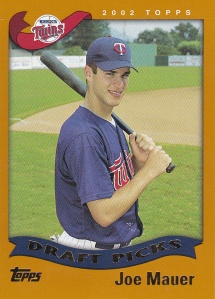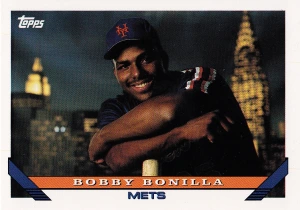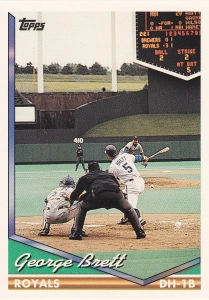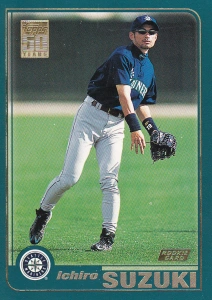On the eve of the Hall of Fame announcement, I realized I needed to catch up for 2022. It’s looking like there will be 2 close-but-not-in guys this year, but Fred McGriff did get elected so I’ll get to do this again in a couple days.

I’m theoretically 2 years behind – the last post was for the 2020 class. However, there was no 2021 class, so I just need to cover last year’s inductees:
There were a whopping six members elected to the Hall via the Era Committees. Because of the impact of COVID, the 2020 class was actually inducted in July 2021, and there were two Era Committees that went in 2022.
The first was the Early Era committee, who elected Negro League legend Buck O’Neill (posthumously, to the chagrin of many) and 19th century African-American player Bud Fowler. Since these were players who never played in the modern Majors – unsurprisingly they don’t have any additions for card sets in my blog.
The Golden Days Era elected 4 players. Minoso actually played in 1980 as a gimmick for the White Sox to make it 5 decades of MLB for him, so he theoretically could have made the 1981 Topps set, but he didn’t. Jim Kaat had 4 cards at the end of his career and the beginning of the period my blog covers. Gil Hodges and Tony Oliva retired well before my blog’s coverage – but interestingly both have side-by-side cards in the Turn Back the Clock subset from 1989.
- Gil Hodges
- Jim Kaat
- Minnie Minoso
- Tony Oliva
Only one player was inducted by the writers last year – Big Papi who got in on his first ballot with 77.9% of the vote. Since my blog is currently through 2004, he’s got about 5 cards from the start of his career to add.
Background!
The number of Hall of Famers in a given set has always been something that intrigued me. I count the number of Hall of Famers for every new set I start, and post about it in my overview. So, since there are now 3 new Hall of Famers to account for, I need to go back and update those posts. In showing this stuff below, I will show the cumulative total as well.
First, some reminders. I include all Hall of Famers from the set. That includes someone like Johnny Bench who had a Turn Back the Clock card in the 1990 set. I also include managers who were Hall of Fame players (Frank Robinson in 1984 Topps, or my personal favorite – Yogi Berra as an Astro coach on their 1987 Topps team leader card). I also include player cards of guys who made the Hall of Fame as a manager (i.e., 1969 Topps Bobby Cox). If you have a bronze plaque in Cooperstown and you’re in the set, I’m including you.
Without any further ado, here we go!
1980 Topps – 45 Hall of Famers
Johnny Bench, Bert Blyleven, George Brett, Rod Carew, Steve Carlton, Gary Carter, Andre Dawson, Dennis Eckersley, Rollie Fingers, Carlton Fisk, Goose Gossage, Rickey Henderson, Reggie Jackson, Fergie Jenkins, Jim Kaat, Willie McCovey, Paul Molitor, Joe Morgan, Jack Morris, Eddie Murray, Jim Palmer, Phil Niekro, Tony Perez, Gaylord Perry, Jim Rice, Nolan Ryan, Mike Schmidt, Tom Seaver, Ted Simmons, Ozzie Smith, Willie Stargell, Bruce Sutter, Don Sutton, Alan Trammell, Dave Winfield, Carl Yastrzemski, Robin Yount, Earl Weaver (manager), Tommy LaSorda (manager), Dick Williams (manager), Sparky Anderson (manager), Joe Torre (manager), Bobby Cox (manager), Tony LaRussa (manager), Lou Brock (HL)
- The induction of Kaat increased this number by 1.
1981 Topps – 46 Hall of Famers
Gone (-2): McCovey and Brock were gone after retiring
New (+3): Whitey Herzog got a manager card when he was hired by St. Louis. Rock Raines and Harold Baines got cards in the 1981 set as part of the Future Stars triple player cards.
- The induction of Kaat increased this number by 1.
1982 Topps – 40 Hall of Famers
Gone (-8): There was no manager subset in 1982, which accounts for the big drop – Weaver, LaSorda, Williams, Herzog, Anderson, Torre, Cox and LaRussa aren’t in this set.
New (+2): Cal Ripken Jr. and Lee Smith both have rookie cards in this set.
- The induction of Kaat increased this number by 1.
1983 Topps – 51 Hall of Famers
Gone (-1): Willie Stargell retired and had his last card in 1982 (-1).
New (+12): The manager subset came back, which led to 9 new cards of Hall of Famers – Weaver, LaSorda, Williams, Sparky, Herzog, Cox, Torre, LaRussa and Frank Robinson. Additionally, Wade Boggs, Ryne Sandberg and Tony Gwynn entered the fray.
- The induction of Kaat increased this number by 1. This is still the set with the most HOF-ers in my Lifetime Topps Project.
1984 Topps – 49 Hall of Famers
Gone (-2): Earl Weaver had retired after the 1982 season, with no new Hall of Fame blood in this set. Jim Kaat retired after 1983, so he could have had a card in this set but Topps didn’t include him.
Bench, Perry and Yastrzemski were only included in a subset card.
- No adds from the 2022 class
1985 Topps – 45 Hall of Famers
Gone (-6): Robinson was gone after his stint as the Giants manager was over, while Bench, Yaz, Perry, Palmer and Jenkins had also had their last player cards.
New (+2): Kirby Puckett’s rookie card is in this set, and Yogi Berra had a card for his second (and controversial) stint as Yankee manager (+2). When I started this blog, Puckett was the most recent rookie card of any Hall of Famer!
- No adds from the 2022 class
1986 Topps – 45 Hall of Famers
Gone (-3): Torre was fired as Braves manager in 1984 and wasn’t gone until this set. Berra was fired as well, and Joe Morgan retired.
New (+3): Earl Weaver was back as the O’s manager, and we had a Turn Back the Clock subset that got Willie Mays and Frank Robinson into the mix.
- No adds from the 2022 class
1987 Topps – 43 Hall of Famers
Gone (-6): Cox was no longer the Blue Jay skipper at this point, and Carew, Fingers and Tony Perez all retired. Robinson and Mays were gone from the TBC subset….
New (+4): But Clemente and Yastrzemski replaced them. Barry Larkin had his first card in this set, and Yogi Berra had the awesome TL card as coach of the Astros!
- No adds from the 2022 class
1988 Topps – 41 Hall of Famers
Gone (-7): Mr. October, Lefty and Tom Terrific and Earl Weaver all retired at this point. Clemente, Yaz and Berra were gone from subsets .
New (+5): Maddux and Glavine had their first base Topps cards, and the subsets were a wash due to 3 new Cardinals – Bob Gibson and Stan Musial from the TBC subset, and Red Schoendienst being featured on the Cards Team Leader card.
Phil Niekro made it only on the Record Breaker subset with his brother in this set.
- No adds from the 2022 class
1989 Topps – 43 Hall of Famers
Gone (-7): Sutton, Simmons, Niekro (RB), Williams (mgr), Schoendienst (TL), Musial (TBC), Gibson (TBC)
New (+9): Roberto Alomar RC, Randy Johnson RC, Craig Biggio RC, John Smoltz RC, Hank Aaron (TBC), Brock (TBC), Gil Hodges (TBC), Tony Oliva (TBC) Frank Robinson (back as a manager)
- As mentioned – Hodges and Oliva we’re in this year’s version of the TBC subset. So two new guys from the 2022 class.
1990 Topps – 43 Hall of Famers
Gone (-6): 2 relievers exited the set – Bruce Sutter and Goose Gossage (who would be back), and 4 guys from the TBC set.
New (+6) Frank Thomas and Larry Walker had RC’s in the set, while Griffey Jr. and Edgar Martinez had their first regular Topps cards. Koufax and Bench were added to the TBC subset (Mike Schmidt had his only card in the TBC subset this year, but he had cards leading up to 1990 so this isn’t a change).
- No adds from the 2022 class
1991 Topps – 41 Hall of Famers
Gone (-5): Rice (retired), Herzog (retired), Schmidt, Bench, Koufax (the TBC set had ended its 5-year run)
New (+3): Torre and Cox, both of whom got back in the managing saddle. Chipper Jones had his first card via the 1st Round Draft Pick subset.
- No adds from the 2022 class
1992 Topps – 45 Hall of Famers
Gone (-1): Robinson (fired as Oriole manager)
New (+5): Gossage (back after a stint in Japan). Pudge and Bagwell are in this set – true rookies were in the Traded set from 1991, but for both these guys this is their first base Topps card. Thome and Mussina are also in this set – they had cards in other products (not Topps Traded) in previous years, so this isn’t their rookie card.
- No adds from the 2022 class
1993 Topps – 49 Hall of Famers
Gone (-1): Gossage (retired for good this time)
New (+5): Tony Perez (Reds manager), Pedro Martinez (first Topps card), Mike Piazza (first Topps card – Prospects card), Trevor Hoffman (first Topps card – Marlins card), Derek Jeter (RC)
- No adds from the 2022 class
1994 Topps – 40 Hall of Famers (a mass exodus!)
Gone (-10): Topps did away with manager cards in 1994, which meant no cards for Torre, LaRussa, Cox, Sparky, Perez and LaSorda. Additionally, Blyleven, Carter and Fisk all retired. Jack Morris didn’t have a card despite pitching in both 1993 and 1994. He did have a card in 1994 Topps Traded, and some cards in a few 1995 sets.
New (+1): Hank Aaron (tribute)
- No adds from the 2022 class
1995 Topps – 35 Hall of Famers (further depleted!)
Gone (-6): Brett, Ryan and Yount (all retired for good). Sandberg (retired temporarily). Dawson (left out of the set, though he is in ’95 Traded). Aaron (tribute).
New (+1): Babe Ruth (tribute)
- No adds from the 2022 class
1996 Topps – 36 Hall of Famers (an actual increase!)
Gone (-3): Winfield (retired), Trammell (not included despite playing both 1995 and 1996), Ruth (tribute)
New (+4): Mickey Mantle (tribute), Dawson (back after ’95 snub), Sandberg (back in baseball after a year-plus hiatus), Vladimir Guerrero (via a prospect card)
- No adds from the 2022 class
1997 Topps – 33 Hall of Famers
Gone (-5): Dawson, Puckett, Ozzie Smith (retired), Mantle (tribute), Lee Smith. Topps didn’t include Lee Smith in the flagship set after 1996 despite him pitching for 2 teams in 1996 and pitching in 25 games in 1997.
New (+2): Jackie Robinson (tribute), Mariano Rivera (first Topps card)
- No adds from the 2022 class
1998 Topps – 31 Hall of Famers
Gone (-5): Murray, Sandberg (retired), Robinson (tribute), Henderson (snubbed – he even has an insert card in the product), Raines (also snubbed).
New (+3): Roberto Clemente (tribute), Roy Halladay, David Ortiz (both first Topps cards via the prospects set). Halladay and Ortiz are the latest first Topps flagship card of any HOFer .

- The induction of Ortiz increased this number by 1.
1999 Topps – 29 Hall of Famers
Gone (-4): Molitor, Eckersley (retired), Clemente (tribute), Baines (snubbed)
New (+2): Nolan Ryan (tribute), Henderson (back after snub)
- The induction of Ortiz increased this number by 1.
2000 Topps – 30 Hall of Famers
Gone (-2): Nolan Ryan (tribute), David Ortiz (missing as he played mostly in the minors in 1999)
New (+3): Hank Aaron (tribute), Raines & Baines (back with regular cards!)
- No adds from the 2022 class
2001 Topps – 39 Hall of Famers
Gone (-2): Wade Boggs (retired), Tim Raines (temporarily retired – but this was his last base Topps card)
New (+11): Ortiz was back for good in 2001. The manager subset was back, which meant new cards for Torre, Cox and LaRussa. There was also a Golden Moments subset, which had new cards of Bill Mazeroski, Reggie Jackson, Jackie Robinson, Roberto Clemente, Nolan Ryan, Lou Brock and Carlton Fisk.
Hank Aaron’s Tribute card was gone in 2001, but he was still in the Golden Moments subset.
- The induction of Ortiz increased this number by 1.
2002 Topps – 29 Hall of Famers
Gone (-11): Cal Ripken & Harold Baines retired, and the Golden Moments subset was gone, which meant those cards of Mazeroski, Jackson, Robinson, Clemente, Ryan, Brock, Fisk and Aaron were gone. Roy Halladay does not have any 2002 Topps cards except for Topps 206 – so there must have been some sort of contract dispute over his likeness that was resolved in time for 2003.
New (+1): Tony Perez managed the Marlins at the end of 2002, and got a manager card in this set for it.
- The induction of Ortiz increased this number by 1.
2003 Topps – 29 Hall of Famers
Gone (-2): Tony Gwynn had retired in 2001, but still got a 2002 card. He was gone from the set in 2003. Perez was no longer a manager, so his card was gone as well.
New (+2): Frank Robinson became the Expos manager in 2002, and got a card in this set. Halladay was back in good graces with the card folks in Philly in 2003.
- The induction of Ortiz increased this number by 1.
2004 Topps – 29 Hall of Famers
Gone (-1): Rickey Henderson retired.
New (+1): Mike Schmidt was included in a subset card along with Jim Thome.
- The induction of Ortiz increased this number by 1.
































































